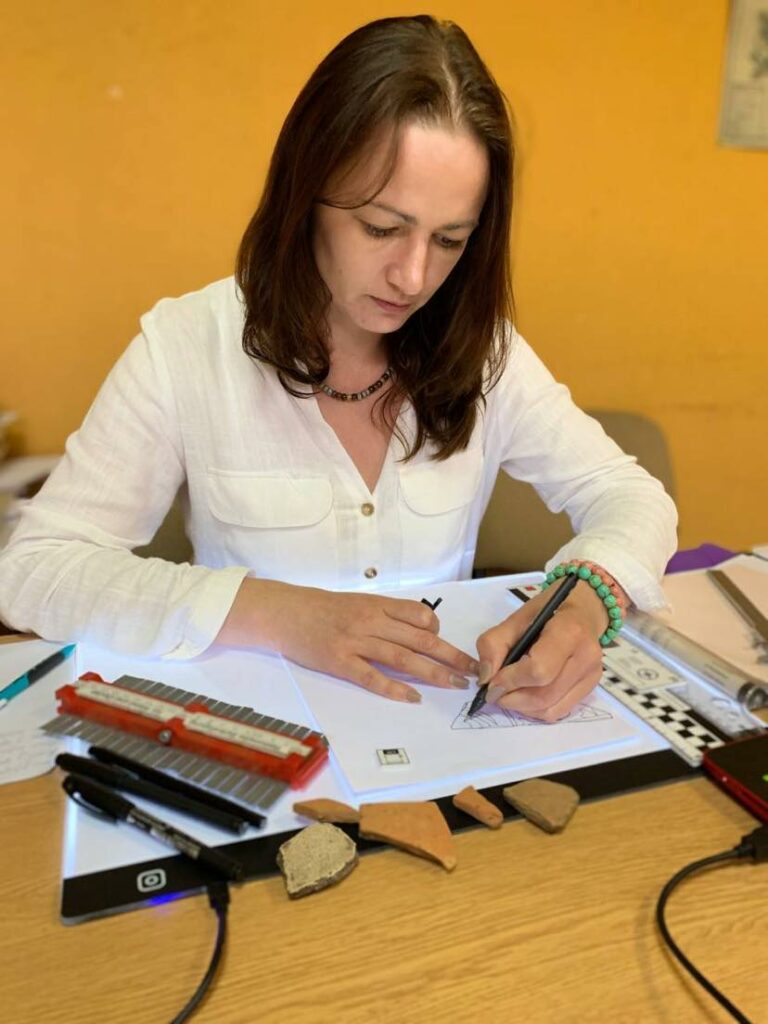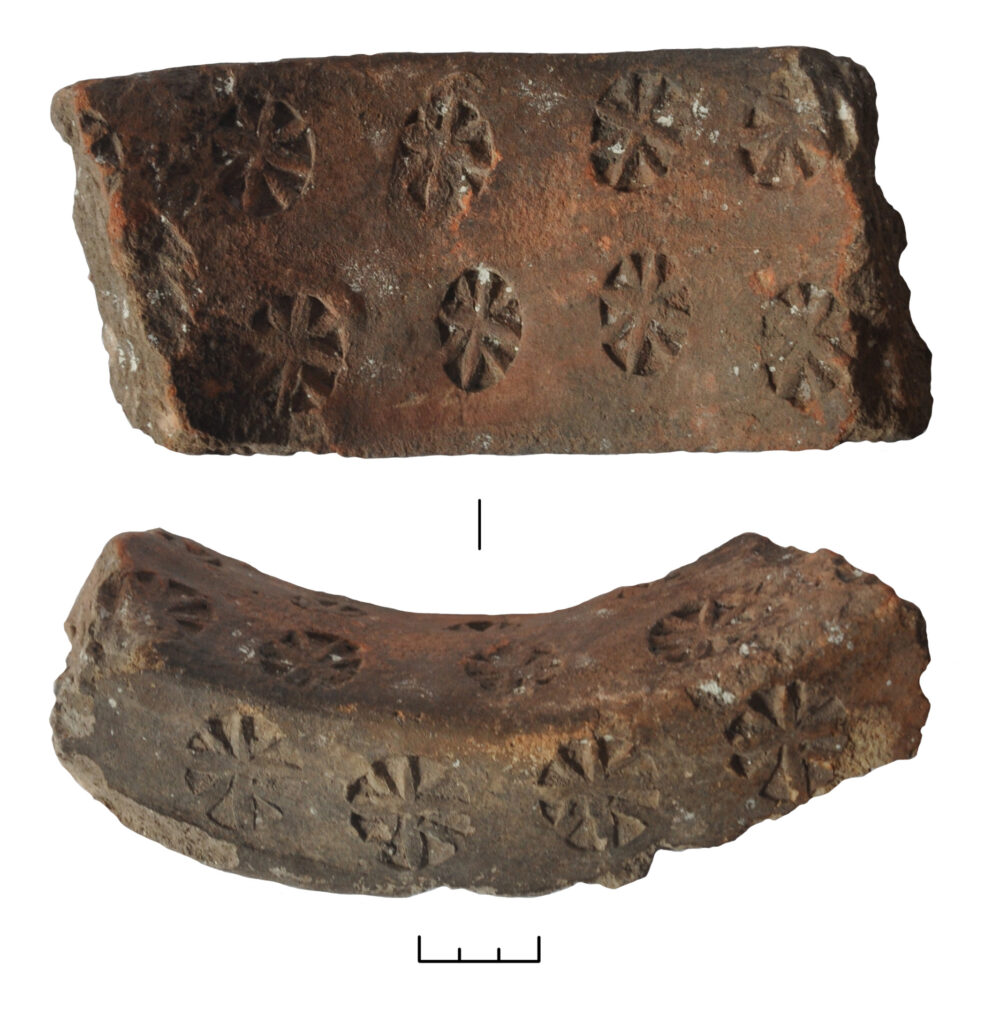The ancient city of Tyras founded by Greek colonists in the 6th century BC in today’s Odesa region is on UNESCO’s Tentative List and is one of the numerous sites threatened by the war in Ukraine. Our fellow Kateryna Savelieva, researcher at the Department of Archaeology of the Crimea and the North-Western Black Sea Region of the Institute of Archaeology of the National Academy of Sciences of Ukraine, investigates the Roman period of the site occupation and explores the religious practices of garrison soldiers who were stationed in the Roman city during that time.
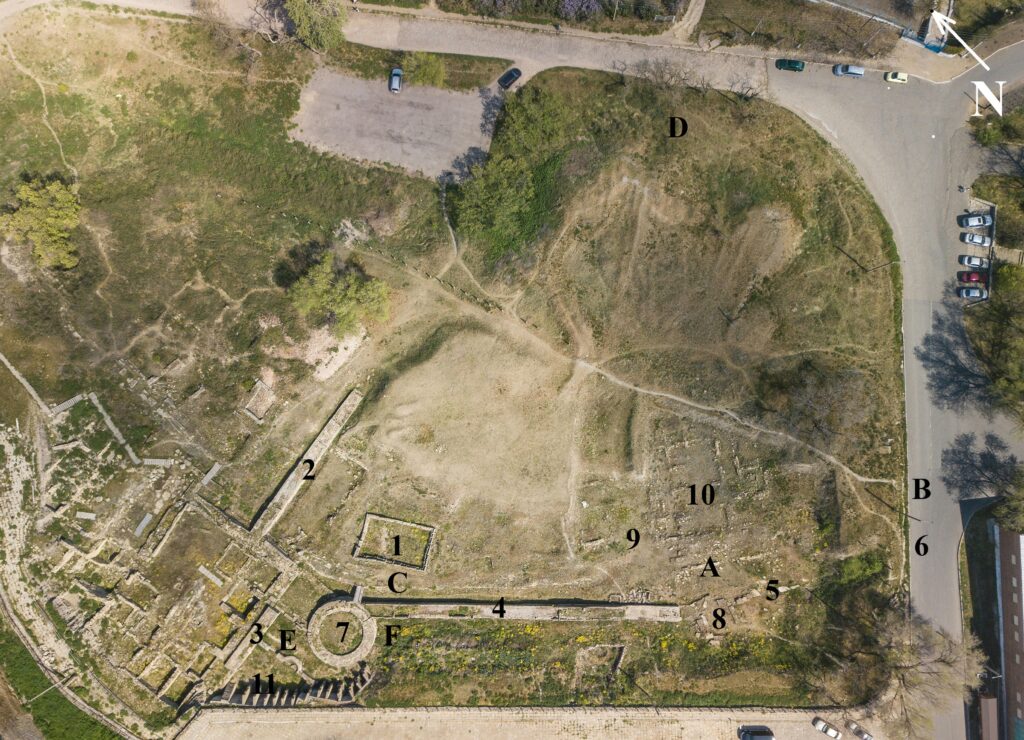
In the 2nd and 3rd centuries AD a Roman garrison was stationed in Tyras. The Roman citadel was explored during 1963–2012. Several sections of the defensive walls, two towers and several buildings were discovered (Fig. 1). Excavations at the citadel yielded artifacts that give insight into the religious ideas and cultic practices of soldiers and officers of the garrison. The materials studied in my work are divided into several groups. The largest group consists of fragments of votive plates with dedicatory inscriptions or relief images. A votive altar and a sculpture were also found. A significant amount of the finds derives from the southern part of the citadel where remains of buildings have been documented.
Remains of a large building have been discovered near the southern curtain wall (construction 497, excavations 1988–1990). These consisted of several layers with limestone slabs and blocks. Since epigraphic materials were found near this structure, I. Kleiman suggested that this might have been a temple. In 2000–2002, a monumental building with a portico (structure 702) was discovered at this site. According to T. Samoylova, this structure might have been remains of a peristyle courtyard that belonged to a cult building. It is currently difficult to say with certainty whether these structures belong to cult buildings. In any case, a number of artifacts related to cultic practices have been discovered near them, in particular, a limestone altar dedicated to a god with the epithet Invicto (Mithras or Hercules) by a military sailor and three fragmentary votive slabs with Latin inscriptions (Fig. 2, 1–4). In 1978 near the vexillation a building fragment of the limestone pediment of a small building with a dedicatory inscription for the emperor’s health was found (Fig. 2, 5).
In 1919, in the northern part of the citadel (trench A, excavations by P. Nicorescu), a marble relief depicting Artemis (Fig. 2, 6) and a marble statuette of Priapus were discovered (Fig. 2, 7).
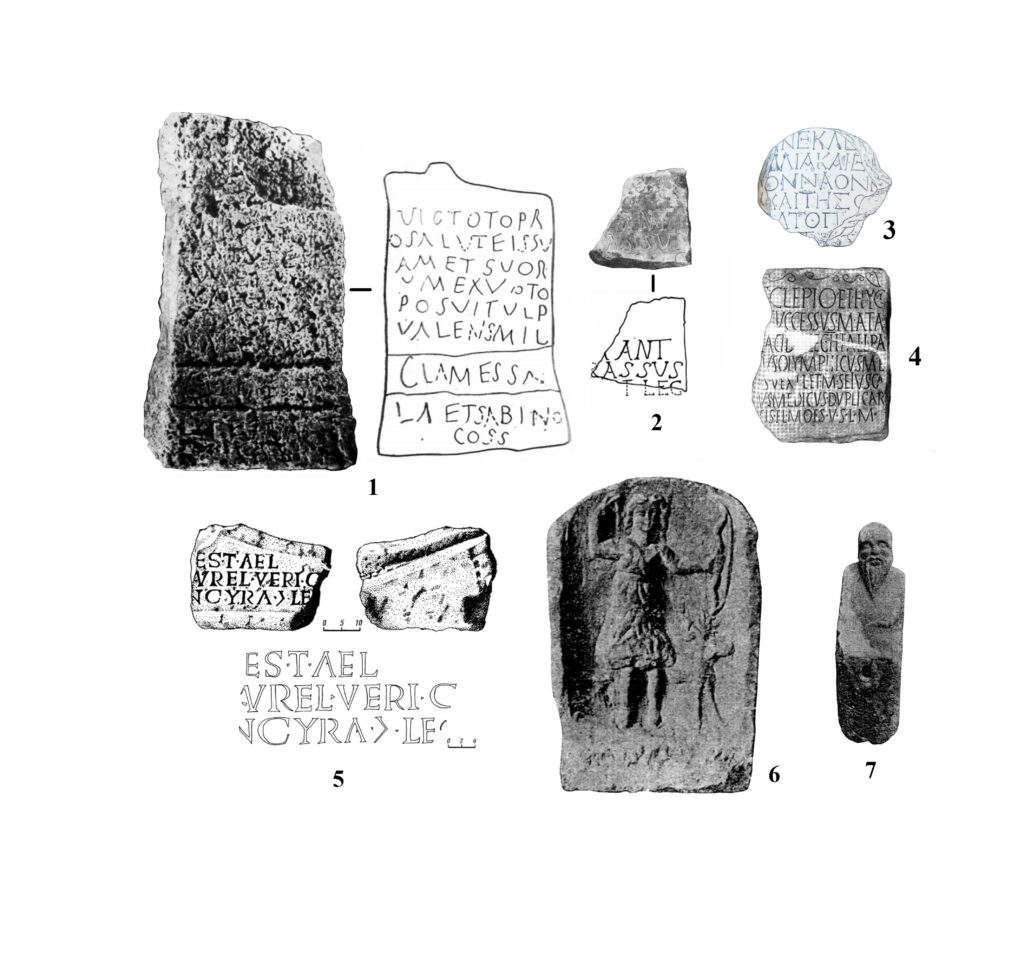
The most interesting structure is located behind the walls of the citadel. It is a building adjoining the curtain wall from the outside (building 610) discovered in 1996 (Fig. 3, 1). A. Rosokhatsky and T. Samoylova interpreted this structure as an early medieval Christian basilica. However, in our opinion, this might have been a sanctuary of Roman times, dedicated to some unofficial cults of the Roman army, probably a Mithraeum. This assumption was made by R. Karasiewicz-Szczypiorski, based on similar buildings, studied at other sites. Indirectly, this assumption is confirmed by the fragments of reliefs depicting a Thracian horseman (Fig. 3, 3–4) and a tauroctony scene (Fig. 3, 5) found near the building. It is possible that both of these deities were worshiped in the same sanctuary.
In conclusion, the information about the religious life of the Roman garrison in Tyras is not numerous, which does not allow us to draw statistical inference about the degree of popularity of a particular deity. Archaeological excavations on the territory of the citadel have not been completed; moreover, not all the results of excavations of the last 20 years have been published. However, we can conclude that some official cults of the Roman army, as well as Eastern and Thracian cults, are attested here.
Kateryna Savelieva
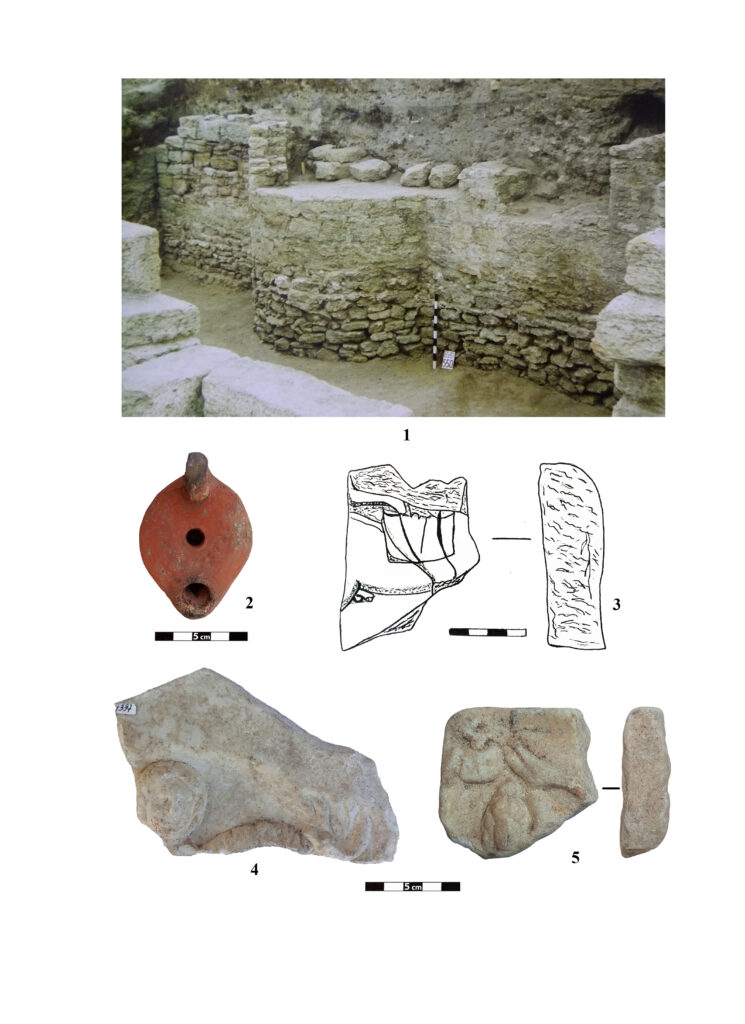
References
Batizat/Rosokhatskiy 2005: Г. Батизат/А. Росохацкий, К изучению мировоззрения населения Тиры в античный период. Вісник Одеського історико-краєзнавчего музею 2, 2005, 4–22.
Karyshkovskiy 1979: П. О. Карышковский, Новые тирасские надписи. В: П. О. Карышковский (ред.), Античная Тира и Средневековый Белгород (Киев 1979) 76–88.
Karyshkovskiy 1987: П. О. Карышковский, Посвятительная надпись римских врачей из Тиры. В: Т. Л. Самойлова/Г. А. Дзис-Райко/П. О. Карышковский/Н. А. Кравченко/Э. Ф. Патокова (ред.), Новые исследования по археологии Северного Причерноморья. (Киев 1987) 52−56.
Nicorescu 1924: P. Nicorescu, Scavi e Scoperta a Tyras. Ephemeris Dacoromana, II, 1924, 378–413.
Rosokhatskiy 1997: А. А. Росохацкий, Отчет о работе Белгород-Тирской экспедиции Института археологии НАН Украины при участии Института Фракологии Румынии в 1997 г. Науковий архів ІА НАНУ, 1997/71.
Samoylova/Kozhokaru 2002: Т. Л. Самойлова/В. Кожокару, Новые данные о культах и культовых античных постройках в Тире. В: П. П. Толочко (ред.), Северное Причерноморье в античное время. К 70-летию С.Д. Крыжицкого (Киев 2002) 109−113.
Son 1986: Н. А. Сон, Новая латинская надпись из Тиры. Вестник древней истории 4, 1986, 60−68.


